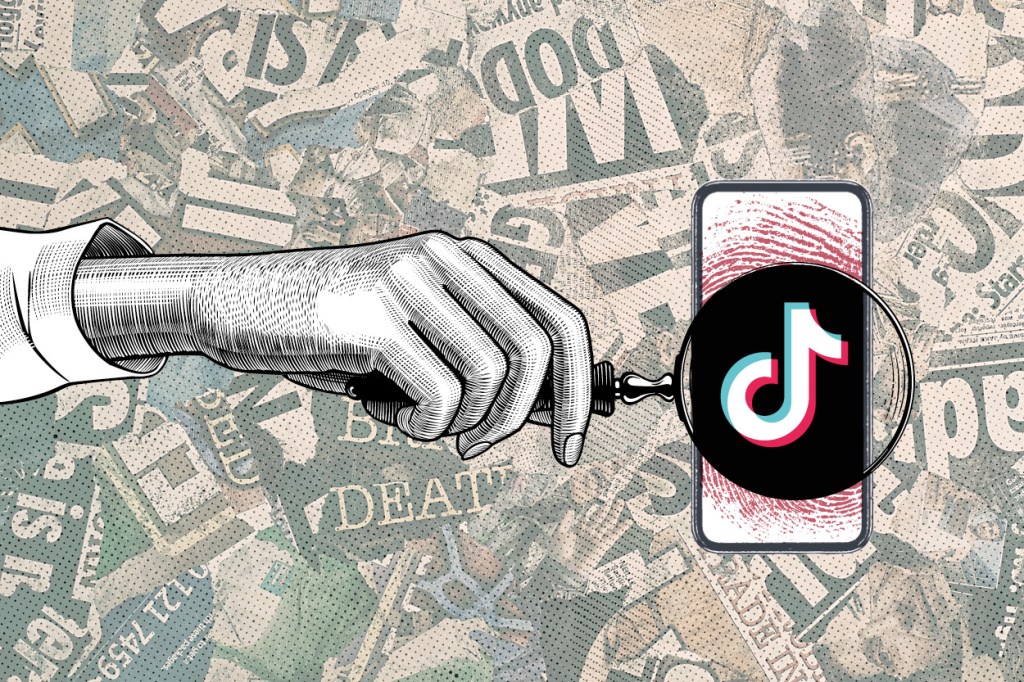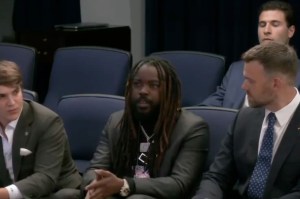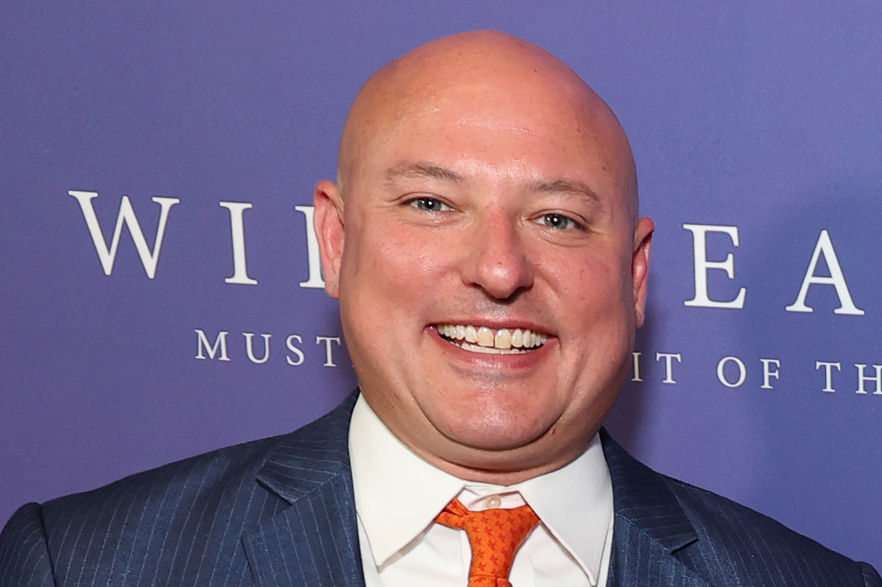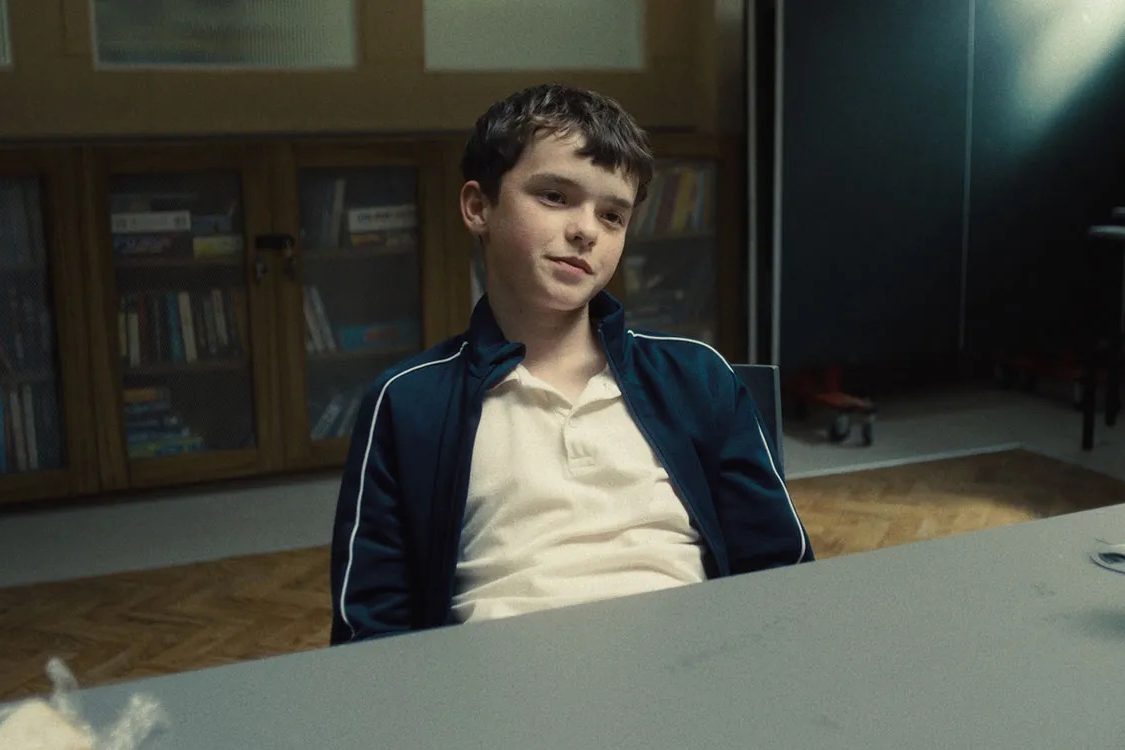The hashtag #truecrime has been viewed over 27 billion times on TikTok. I think I can probably claim a few thousand myself, scrolling endlessly through gruesome murder cases dictated by a spotty teenager until I’m frozen stiff with fear. It was only a matter of time before these TikTok detectives began to blur the line between their feeds and the real world, and between what really happened and what they wished had happened. More clicks means more exposure. More exposure means more money.
Last week in England, Lancashire police officers investigating the disappearance of a woman called Nicola Bulley held a press conference where they slammed TikTokkers for “playing private detective,” claiming they had been “inundated with false information.” The investigation into Bulley’s case had been opened three weeks earlier, after the mother of two had gone missing on a long dog walk after the school run: nothing unusual until, in the words of her husband, she “vanished into thin air.”
This caused a frenzy. Nicola’s phone was found on a bench, still connected to the work meeting she had joined remotely. The dog, a Springer Spaniel named Willow, was dry. There were admittedly enough blank spaces for the collective imagination of TikTokkers to fill with wild conspiracies. Soon after her disappearance, all kinds of absurd videos started to crop on social media with amateur sleuths speculating wildly: the phone was a decoy, she had run off with her brother-in-law to New York, it was the husband.
But what started with conspiratorial voiceovers on TikTok soon mutated into more ghoulish behavior. The BBC reported that “amateur social media sleuths” had traveled to the scene to dig up the area. They filmed content, and at one point attempted to break into an abandoned house for a better shot of the river where Nicola Bulley disappeared. The police were forced to issue a public dispersal notice when local residents had to hire private security.
One YouTuber, Dan Duffy, was arrested after traveling to the crime scene and recording it for his 206,000 subscribers. He told his fans he had “been in people’s back gardens at night-time,” telling them that he “demanded answers” about the disappearance of a woman whom he didn’t even know. (The sense of entitlement that this case revealed was astonishing.) When I spoke to Dan, he had been released without charge but was reeling from his subsequent TikTok ban. “I don’t understand why my TikTok was taken down when everybody else was doing the same thing,” he said. “It will be [mass reports] from the jealous people that were jealous of me anyway because of my big following.”
Nicola Bulley’s body was identified by police on Monday. It was found in the river, next to where she was last spotted. Police say there was no foul play. Her two children and husband, as well as her grieving friends — the ones who were described by some teenage TikTokkers as “crisis actors” — can finally be left to mourn. But this won’t be the last case to be negatively impacted by bored armchair detectives who think they’re in a real-life Agatha Christie novel.
It wasn’t the first case to be affected by this phenomenon either. Last November, the discovery of four dead students shocked the sleepy town of Moscow, Idaho, but in the world of TikTok, these gruesome killings were little more than Hollywood entertainment.
Kaylee Goncalves, Madison Mogen, Xana Kernodle and Ethan Chapin were found stabbed to death in their home, after two of their surviving roommates called 911. Police swarmed the scene: no motive or murder weapon was found, and during the six-week investigation, few updates were given. This uncertainty led various TikTok accounts to fill in the gaps themselves; some went so far to publicly name individuals as murderers without cause. It took just weeks for the true crime-TikTok machine to accuse one of the students who survived that devastating night.
Ted Williams, ex-homicide detective turned defense lawyer, told me that the Idaho murders showed the “true danger” of TikTok detectives: “Young college students were weighing in on who the perpetrator was when no one had been apprehended. As a matter of fact, they went as far as to accuse a professor of being involved in the murder of these poor college students.”
Williams added that while information from the public can be helpful, there is only so much that members of the public should do. “The last thing you want when you’re conducting an investigation is to have inexperienced individuals get in the way. There is often a need for the public’s help, detectives might ask for help to locate a white van, and will naturally get quite a few chips coming in. But TikTok detectives, turning up when they don’t have any experience in the processing of a crime scene, it’s dangerous. This is something that law enforcement is deeply, deeply disturbed and concerned about.”
The Idaho murders transcended TikTok, and conspiracy theorists took over all of the dark corners on the web. At the time, the Daily Telegraph reported that “thousands of amateur sleuths have flooded online forums. On Reddit, the idahomurders thread has 49,000 members and the MoscowMurders board has 69,000. On Facebook, a discussion group has 64,000 members and nearly 10,000 posts. There is already a podcast series.” The membership of those subreddits are now well over 100,000.
To make matters worse, during the investigation, an affidavit was unsealed that revealed that on the night of the murders, one of the roommates saw the suspect in the house in the early hours. The surviving roommate, who was referred to as “D.M.,” said that they opened the bedroom door several times, including at one point when she thought she heard crying and a voice that said something that sounded like, “It’s OK, I’m going to help you.” When D.M. opened her door for the third time, the affidavit said she saw a “5’10 figure in black clothing and a mask.” The figure walked toward her while she stood in a “frozen shock,” before leaving the house. Within weeks of the affidavit being released, videos with the hashtag of the surviving roommate’s legal name gained over 36 million views, with armchair detectives quick to question her actions on the morning of the murders.
When Bryan Kohberger was arrested as a suspect in the case, many social media sleuths weren’t content to leave it be. On Facebook, an account named “Justice for Bryan Kohberger” was created days after his arrest and now has over 3,000 members. There is also a r/Brynation on Reddit, with a thread titled, “What was it about Bryan that got your liking?” And r/BryanKohberger has another thread titled “Why Bryan Kohberger Is Not Guilty.”
Not all members of law enforcement are so critical of TikTok detectives. Chicago detective Matt Thornton has a TikTok account with 285,000 followers. He told me that “in a social media age, we might as well take advantage of the reality that TikTok can help solve crimes.” Throughout his nineteen years as a detective, Thornton says that “there’ve been quite a few cases that social media has led us right to who did it.” He adds that there has also “been a few where social media has led us astray.” He thinks that it’s all about balance. “I don’t think that police departments should totally run with it, but you’ll get some stubborn police that say, ‘oh, we’re not listening to anything on social media.’ It’s almost like they are dinosaurs living in the past.”
He tells me about a missing persons case that he had. “One of my bigger cases, actually,” he explains. “I got a lot of help from outside sources that were on social media. They don’t necessarily have all the answers, but they think outside of the box in ways that sometimes we [law enforcement] don’t.” He says, “it should be mandated that officers learn the ins and outs of TikTok, the ins and outs of how Snapchat and YouTube shorts work. They need to know this stuff.”
And he isn’t the only one. After twenty-two-year-old Gabby Petito went missing in 2021 during a “dream” cross-country road trip from New York to Oregon with her fiancé Brian Laundrie, the hashtag #GabbyPetito on TikTok had more than half a billion views, and amateur detectives shared tips, footage and theories. In a rare exception to complaints about social media, Tiktokkers were praised by Petito’s family and their tip-offs are thought to have provided key clues about the timeline of what happened to the young girl.
It was later revealed that Gabby Petito was strangled to death by Laundrie, and her body was found in a Wyoming national park. But at a press conference, Gabby’s father, Joseph Petito, thanked those on social media who contributed to efforts to find her, and stressed that other missing people should be treated the same way. Mr. Petito said: “Social media has been amazing. I’d like to thank everyone for that, it was very helpful in bringing our daughter home.” He later added: “This awareness should continue for everyone.”
So where do we draw the line between interest and obsession? Nicola Bulley’s case has shown the pain and destruction that can be brought on by amateur sleuths, while Gabby Petito’s death shows that in rare instances this morbid fascination with true crime can pay off. Social media — particularly with TikTok — has led its users to believe they are main characters in a murder mystery. Except the victims, the ones influencers are analyzing for clicks, are real.

























